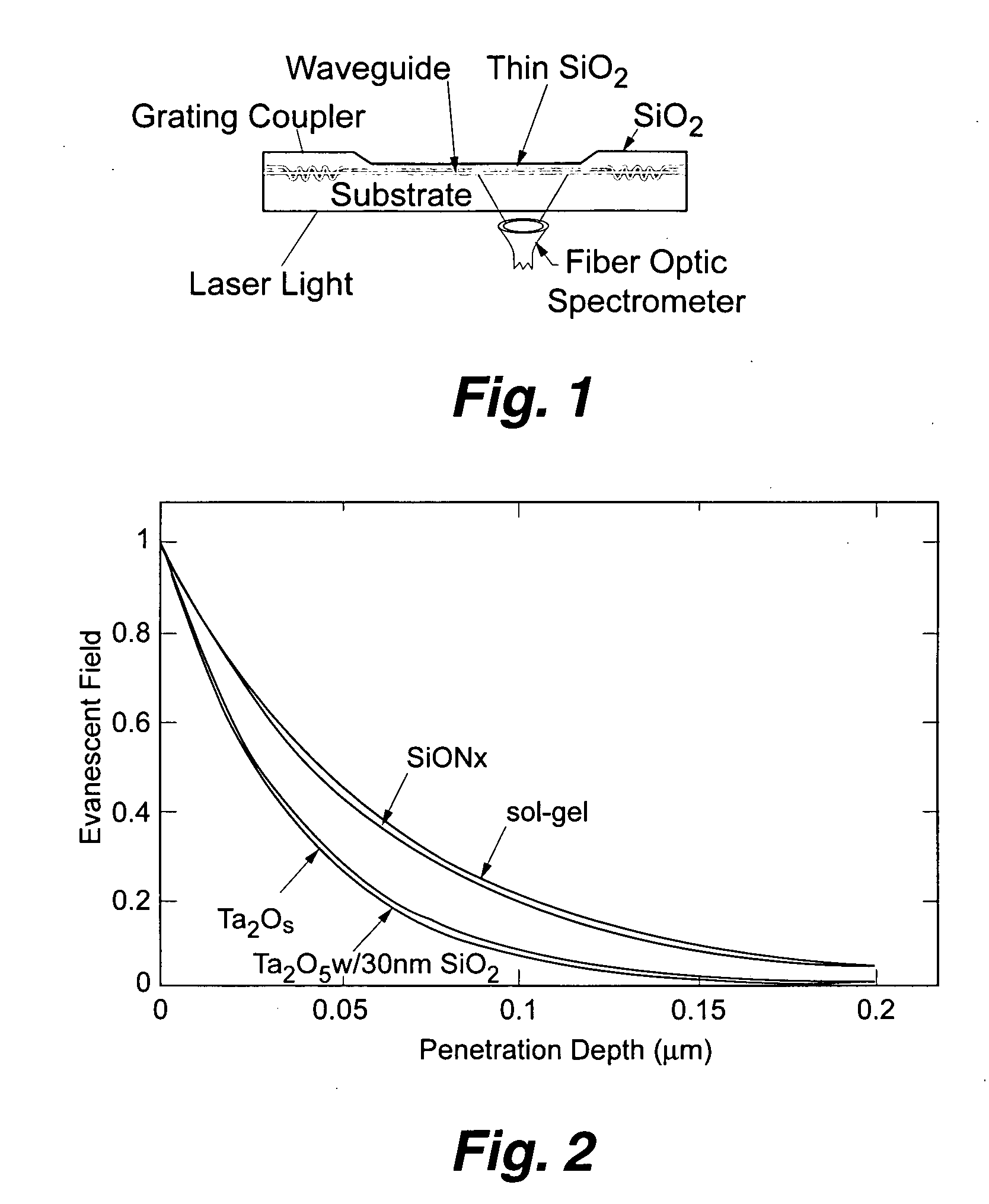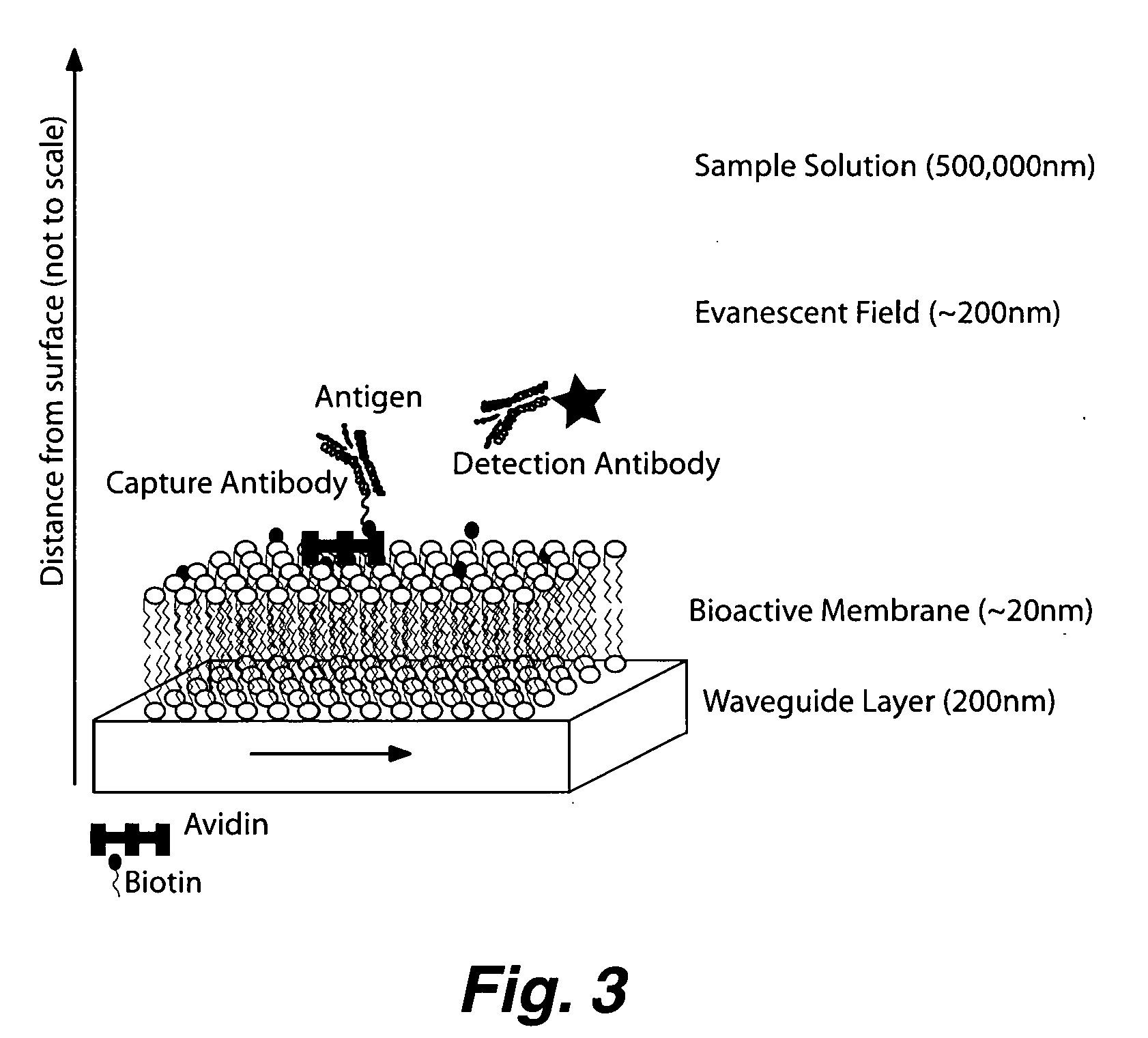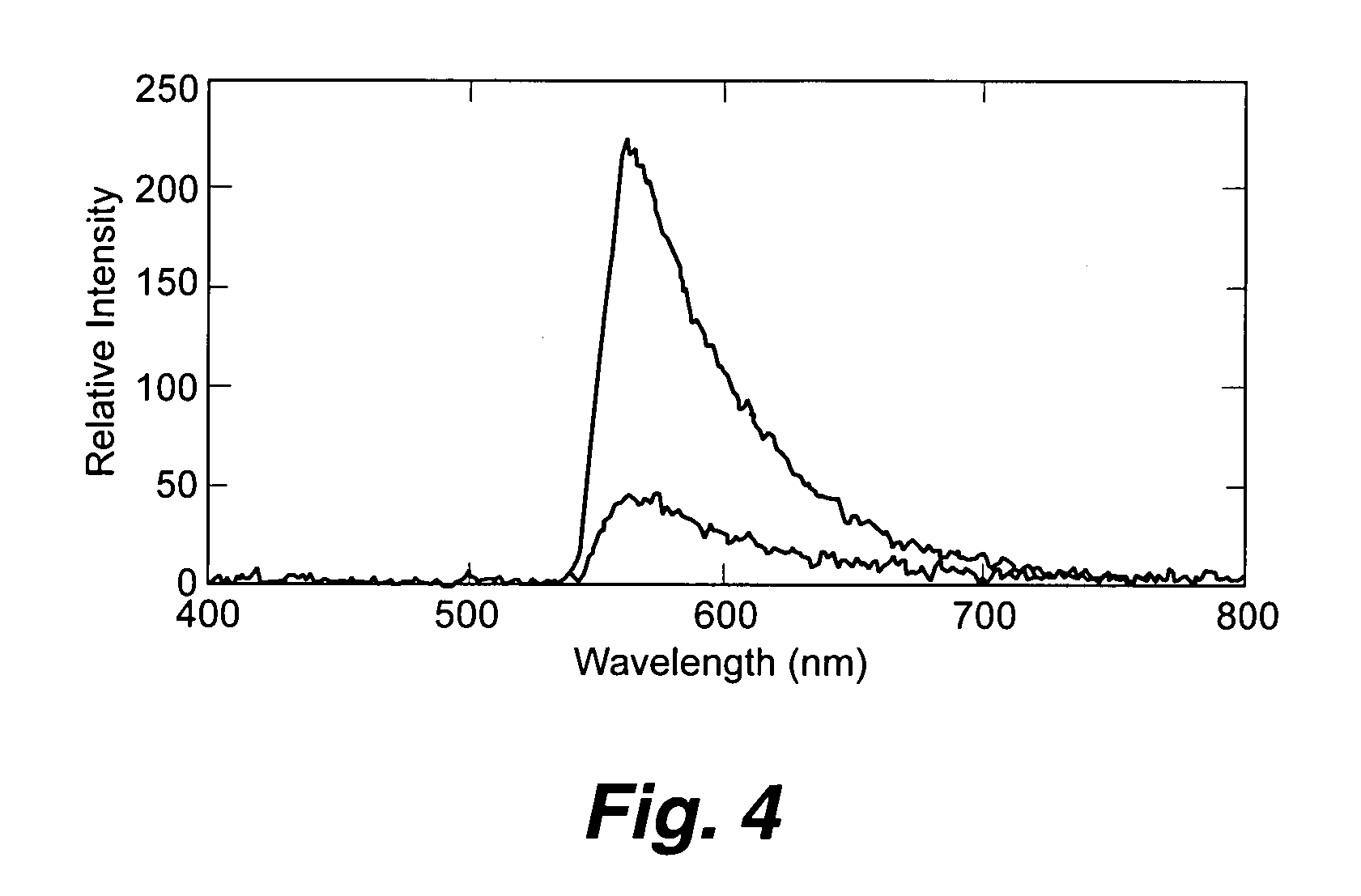Planar optical waveguide based sandwich assay sensors and processes for the detection of biological targets including protein markers, pathogens and cellular debris
a technology of optical waveguides and sensors, applied in the field of sandwich assay sensors and processes for the detection of biological targets, can solve the problems of high processing costs, limited shelf life, and high cost of enzymes
- Summary
- Abstract
- Description
- Claims
- Application Information
AI Technical Summary
Benefits of technology
Problems solved by technology
Method used
Image
Examples
example 1
[0065] Biotinylated capture antibodies were coupled through avidin / streptavidin to biotinylated phospholipid bilayers composed of 1% to 3% biotin-phosphoethanolamine in a matrix of DOPC (1,2-Dioleoyl-sn-Glycero-3-Phosphocholine) and attached to the surface of planar optical waveguides. The performance of the immunoassay was evaluated by monitoring the response of the waveguide apparatus to varying concentrations of PA (pM to EM). No significant differences between the sensitivity of the instrumentation when PA was in buffer or in complex medium consisting of sugars, proteins, and cellular debris were observed. Although this assay has not yet been optimized for sensitivity, results from 1 pM PA (0.083 ng / mL, 0.0166 ng) in complex medium on sol-gel waveguides (FIG. 4) are shown. The top curve of this figure shows the spectral response of the excited waveguide following exposure to the complex medium spiked with 1 pM (0.083 ng / mL) PA. The lower curve is the response observed for the sa...
example 2
[0068] The present invention has also been targeted towards detection of B. anthracis cells. FIG. 6(a) shows the detection of cells using SiONx waveguides. These results show that not only can the present invention detect pathogenic antigens, but also can detect cellular components. Whether cell detritus or whole cells are being detected is not wholly clear, as the majority of a whole cell captured on a waveguide surface would be beyond the evanescent field. Moreover, it is expected that capture of whole cells at the waveguide surface will be limited owing to slow diffusion of intact cells relative to smaller cell components from disrupted cells. Again, as stated earlier, whole cell or cellular debris detection in serum might be an alternative to cell culturing and fluorescent microscopy assays commonly used as definitive diagnostic tests. To add to this B. anthracis biosensor, an assay to detect capsule, encoded by one of the virulent plasmids of B. anthracis, is being incorporated...
PUM
| Property | Measurement | Unit |
|---|---|---|
| Nanoscale particle size | aaaaa | aaaaa |
| Biological properties | aaaaa | aaaaa |
| Time | aaaaa | aaaaa |
Abstract
Description
Claims
Application Information
 Login to View More
Login to View More - R&D
- Intellectual Property
- Life Sciences
- Materials
- Tech Scout
- Unparalleled Data Quality
- Higher Quality Content
- 60% Fewer Hallucinations
Browse by: Latest US Patents, China's latest patents, Technical Efficacy Thesaurus, Application Domain, Technology Topic, Popular Technical Reports.
© 2025 PatSnap. All rights reserved.Legal|Privacy policy|Modern Slavery Act Transparency Statement|Sitemap|About US| Contact US: help@patsnap.com



